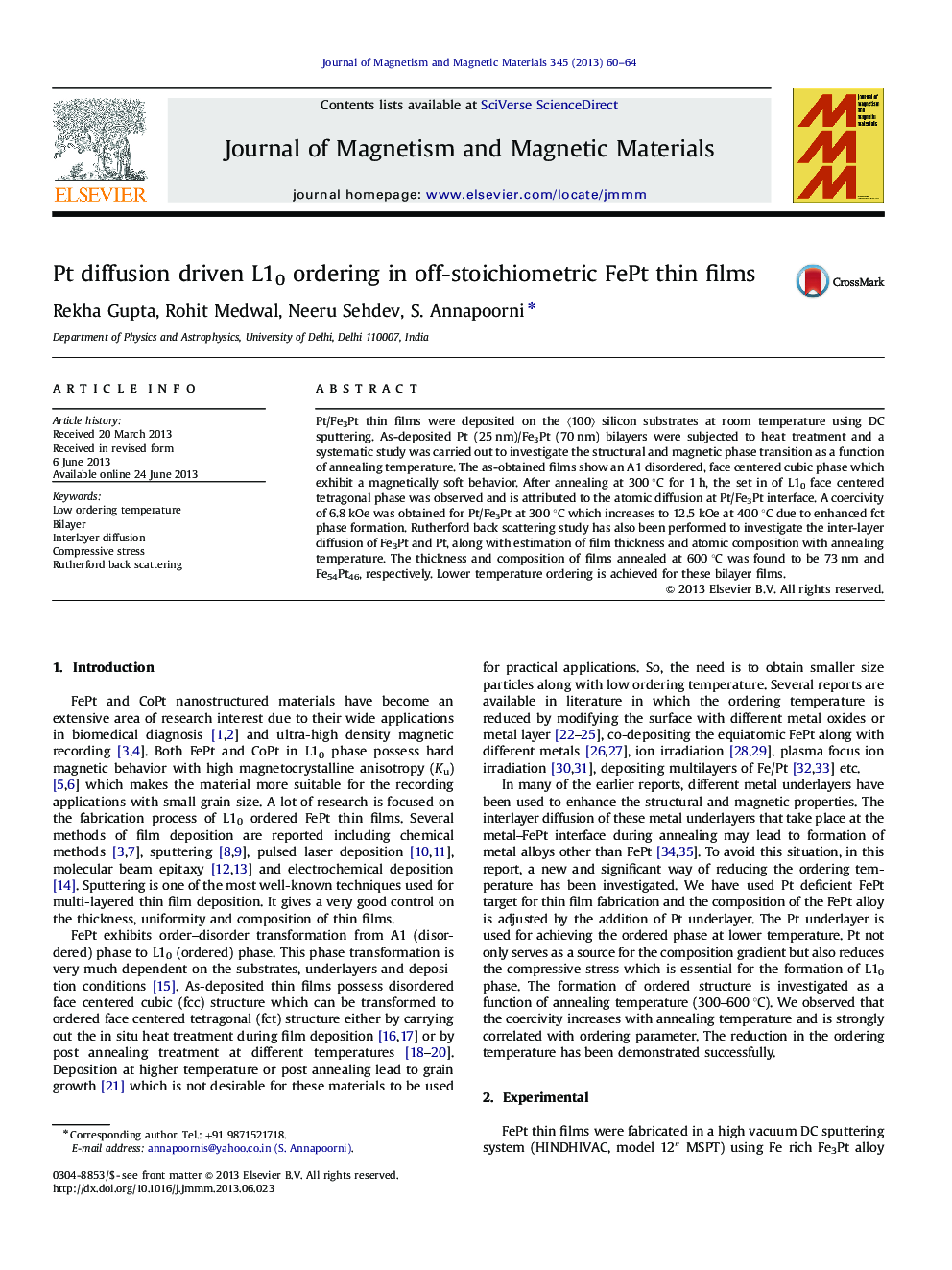| Article ID | Journal | Published Year | Pages | File Type |
|---|---|---|---|---|
| 1800020 | Journal of Magnetism and Magnetic Materials | 2013 | 5 Pages |
•Lower temperature ordering achieved by using Pt/Fe3Pt bilayered structure.•Pt underlayer not only serves as a source for composition gradient but also reduces compressive stress which initiates low temperature ordering.•Interlayer diffusion as a function of annealing temperature is explained using Rutherford back scattering (RBS) technique.•A coercivity of 6.8 kOe was obtained after annealing at 300 °C for 1 h which increases to 12.5 kOe at 400 °C.
Pt/Fe3Pt thin films were deposited on the 〈100〉 silicon substrates at room temperature using DC sputtering. As-deposited Pt (25 nm)/Fe3Pt (70 nm) bilayers were subjected to heat treatment and a systematic study was carried out to investigate the structural and magnetic phase transition as a function of annealing temperature. The as-obtained films show an A1 disordered, face centered cubic phase which exhibit a magnetically soft behavior. After annealing at 300 °C for 1 h, the set in of L10 face centered tetragonal phase was observed and is attributed to the atomic diffusion at Pt/Fe3Pt interface. A coercivity of 6.8 kOe was obtained for Pt/Fe3Pt at 300 °C which increases to 12.5 kOe at 400 °C due to enhanced fct phase formation. Rutherford back scattering study has also been performed to investigate the inter-layer diffusion of Fe3Pt and Pt, along with estimation of film thickness and atomic composition with annealing temperature. The thickness and composition of films annealed at 600 °C was found to be 73 nm and Fe54Pt46, respectively. Lower temperature ordering is achieved for these bilayer films.
